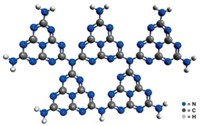Advertisement
Grab your lab coat. Let's get started
Welcome!
Welcome!
Create an account below to get 6 C&EN articles per month, receive newsletters and more - all free.
It seems this is your first time logging in online. Please enter the following information to continue.
As an ACS member you automatically get access to this site. All we need is few more details to create your reading experience.
Not you? Sign in with a different account.
Not you? Sign in with a different account.
ERROR 1
ERROR 1
ERROR 2
ERROR 2
ERROR 2
ERROR 2
ERROR 2
Password and Confirm password must match.
If you have an ACS member number, please enter it here so we can link this account to your membership. (optional)
ERROR 2
ACS values your privacy. By submitting your information, you are gaining access to C&EN and subscribing to our weekly newsletter. We use the information you provide to make your reading experience better, and we will never sell your data to third party members.
Solar Power
Toward artificial leaves that float on water, bubbling fuel
Organic photovoltaic-based devices split water and CO2 to make solar fuels
by Prachi Patel
May 2, 2024
| A version of this story appeared in
Volume 102, Issue 14
Scientists have been trying to mimic the energy-generating ability of photosynthesis for decades. The ideal technology would be a device that integrates photovoltaic materials, which convert sunlight to electricity, with electrocatalysts that convert water and carbon dioxide to hydrocarbon fuels.
Researchers have now made such an artificial leaf device using an organic photovoltaic (OPV) material. Depending on the catalyst used, the device either splits water to make hydrogen fuel or splits water and CO2 to create syngas—a mix of hydrogen and carbon monoxide that is used to make liquid fuels such as diesel.
The work is a step toward low-cost, sustainable artificial leaves that float on water and produce solar fuels, says Celine Wing See Yeung at the University of Cambridge. She presented the research in April at a meeting of the Materials Research Society (ChemRxiv 2024, DOI: 10.26434/chemrxiv-2024-ql0bc). This is the first OPV-based artificial leaf to produce syngas, she says, and its days-long runtime is the highest reported for OPV-based devices.
Artificial leaves made with silicon and other inorganic semiconductors are expensive, heavy, and rigid. Two years ago, Erwin Reisner’s group at Cambridge used perovskite photovoltaics to make a lightweight artificial leaf that could float on water, soaking up sun and producing syngas (Nature 2022, DOI: 10.1038/s41586-022-04978-6).
Because perovskites typically contain lead, the researchers sought to make a similar device with nontoxic, flexible OPVs, according to Yeung. “You can also tailor the molecular structures of these polymers to fit your desired applications,” she says. But they are unstable in aqueous environments.
So she, Reisner, and colleagues encapsulated a thiophene-based OPV with a hydrophobic, conductive graphite-epoxy paste. They deposited a platinum film as the water-splitting catalyst on one side, then coated the edges and wiring of the device with epoxy resin. Under simulated sunlight, the device generated hydrogen for over 12 days when placed in a slightly salty aqueous solution.
To produce syngas, the team replaced the platinum with bismuth vanadate, a promising water-splitting catalyst. On the other side of the encapsulated OPV, they affixed a carbon nanotube sheet loaded with a cobalt-based catalyst that reduces CO2 to CO. This device produced syngas for almost 4 days when placed in a solution of CO2 and water. Both hydrogen and syngas bubble out of the solutions and can be collected. Yeung says outdoor tests in real-world conditions are next, along with work to boost efficiency and stability. It should be possible to make a lightweight, floating version of this device, she adds.
Jinlong Gong, a chemical engineer at Tianjin University, says this advance sets a benchmark for stability of organic devices. “Achieving operational stability for 300 hours in a near-neutral pH solution represents a significant leap forward in durability.” At 0.2%, the device’s solar-to-fuel efficiency is lower than that of natural photosynthesis at 0.5–1% or of the best inorganic PV-based devices. But, Gong says, this is “a pioneering effort that paves the way towards more sustainable and versatile solar fuel systems.”
CORRECTION:
This story was updated on May 8, 2024, to accurately describe the working of the floating artificial leaf. The device did not use CO2 from the air to make syngas.





Join the conversation
Contact the reporter
Submit a Letter to the Editor for publication
Engage with us on Twitter